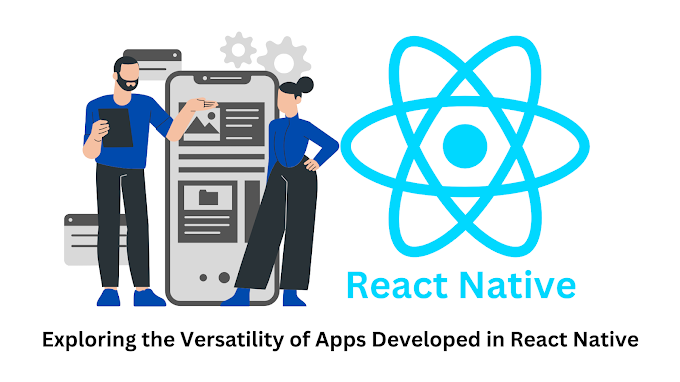Introduction
Cascading Style Sheets (CSS) are the magic behind the visual appeal of websites. To succeed in a web development career, it's crucial to master CSS and perform well in interviews. In this comprehensive guide, we've compiled 20 common CSS interview questions frequently asked by companies. Each question comes with a detailed explanation and a sample answer to help you prepare effectively and confidently for CSS interviews.
1. Introduction: Preparing for CSS Interviews
The Role of CSS in Web Development
CSS is a styling language used to control the layout and appearance of web pages. It plays a vital role in creating visually appealing and user-friendly websites.
The Interview Process
CSS interviews evaluate a candidate's knowledge of CSS fundamentals, best practices, and problem-solving skills. Preparing well is key to making a strong impression.
Tips for Success
Before diving into the interview questions, it's essential to review CSS basics, practice coding, and understand the latest CSS techniques. Be prepared to explain your thought process and demonstrate your CSS skills during interviews.
2. CSS Essentials
Understanding CSS
CSS is a stylesheet language used to define how HTML elements are displayed on a web page. It uses selectors to target HTML elements and applies styles to them.
Key Concepts in CSS
Key concepts in CSS include selectors, properties, values, specificity, the Box Model, positioning, layout techniques (Flexbox and CSS Grid), and responsive design.
Why CSS Matters
CSS is crucial for creating visually appealing and consistent web designs. It ensures that web content is presented effectively on different devices and screen sizes.
3. 20 Common CSS Interview Questions
Let's explore the 20 common CSS interview questions along with detailed explanations and sample answers.
Question 1: What is CSS, and what is its role in web development?
Answer: CSS (Cascading Style Sheets) is a stylesheet language used to control the layout and appearance of web documents. It defines how HTML elements are displayed, facilitating the creation of visually appealing and user-friendly web pages.
Question 2: Explain the difference between inline, internal, and external CSS.
Answer: Inline CSS is applied directly to an HTML element using the 'style' attribute. Internal CSS is defined within a <style> element in the HTML document's <head> section. External CSS is stored in a separate .css file and linked to the HTML document using the <link> element.
Question 3: How do you select an HTML element with CSS?
Answer: HTML elements are selected using CSS selectors. For example, to select all <p> elements, you can use the selector p. To select elements with a specific class, use .classname, and to select elements with a specific ID, use #id.
Question 4: What are CSS selectors, and what are the most commonly used ones?
Answer: CSS selectors are patterns used to select and style HTML elements. Commonly used selectors include:
- Type selectors (e.g.,
pselects all<p>elements).
- Class selectors (e.g.,
.highlightselects elements with class="highlight").
- ID selectors (e.g.,
#headerselects an element with id="header").
- Descendant selectors (e.g.,
ul liselects all<li>elements within<ul>).
- Child selectors (e.g.,
ul > liselects direct child<li>elements of<ul>).
Question 5: Describe the CSS Box Model and its components.
Answer: The CSS Box Model is a fundamental concept in CSS layout. It consists of four components:
- Content: The actual content of the element.
- Padding: Space between the content and the element's border.
- Border: A line that surrounds the padding.
- Margin: Space between the border and neighboring elements.
Question 6: How do you center an element horizontally and vertically using CSS?
Answer: To center an element horizontally, you can use margin: 0 auto; on a block-level element with a defined width. To center vertically, you can use flexbox or CSS Grid. For example, with flexbox, you can use display: flex; align-items: center; justify-content: center; on the parent container.
Question 7: What is the importance of specificity in CSS, and how is it calculated?
Answer: Specificity determines which CSS rule takes precedence when multiple rules target the same element. Specificity is calculated using four values: the number of IDs, classes, and elements in the selector, and whether the selector uses inline styles. A higher specificity value wins.
Question 8: Explain the difference between 'position: relative,' 'position: absolute,' and 'position: fixed.'
Answer:
position: relativepositions an element relative to its normal position in the document flow.
position: absolutepositions an element relative to its nearest positioned ancestor (withposition: relative,position: absolute, orposition: fixed).
position: fixedpositions an element relative to the viewport, so it stays fixed even when the page is scrolled.
Question 9: How can you create a CSS-only responsive design?
Answer: A CSS-only responsive design can be achieved by using relative units like percentages and 'em' or 'rem', using media queries to apply different styles based on screen size, and employing flexible layout techniques like Flexbox and CSS Grid.
Question 10: What is a CSS preprocessor, and why would you use one?
Answer: A CSS preprocessor (e.g., Sass, Less) extends CSS with features like variables, nesting, and functions. Preprocessors help organize and maintain CSS code, making it more efficient and maintainable.
Question 11: Describe the concept of CSS pseudo-elements and pseudo-classes.
Answer: Pseudo-elements (e.g., ::before, ::after) create virtual elements in the DOM to style certain parts of an element. Pseudo-classes (e.g., :hover, :nth-child()) select elements based on their state or position in the document.
Question 12: What is the CSS 'float' property used for, and how does it work?
Answer: The 'float' property is used for text and element positioning. It allows an element to float to the left or right within its containing element. Floated elements can affect the layout of surrounding content.
Question 13: Explain the importance of the 'z-index' property in CSS.
Answer: The 'z-index' property controls the stacking order of elements with positioning (e.g., position: relative, position: absolute). Elements with a higher 'z-index' value appear above elements with a lower value.
Question 14: Discuss the concept of CSS transitions and animations.
Answer: CSS transitions and animations are used to create smooth and interactive effects. Transitions specify how property changes occur over time, while animations provide greater control over complex animations, including keyframes and timing functions.
Question 15: What is the 'box-shadow' property in CSS, and how is it used?
Answer: The 'box-shadow' property adds shadows to elements. It accepts values for the horizontal and vertical offsets, blur radius, spread distance, color, and inset option.
Question 16: How do you deal with browser compatibility issues in CSS?
Answer: Browser compatibility issues can be addressed by using CSS resets or normalizing styles, testing in multiple browsers, and using vendor prefixes for CSS properties that require them.
Question 17: What are CSS vendor prefixes, and when should you use them?
Answer: CSS vendor prefixes (e.g., -webkit-, -moz-, -ms-) are used to implement experimental or browser-specific CSS properties. They should be used when necessary for cross-browser compatibility, but only for properties that lack full support.
Question 18: Explain the concept of Flexbox and how it differs from CSS Grid.
Answer: Flexbox is a one-dimensional layout model that deals with arranging elements in rows or columns. It is ideal for creating flexible and dynamic layouts. CSS Grid is a two-dimensional layout model that creates grid-based layouts with rows and columns, making it suitable for complex grid structures.
Question 19: Describe the benefits and challenges of using CSS frameworks.
Answer: CSS frameworks like Bootstrap offer pre-designed styles and components, saving time and effort. However, they may introduce a learning curve, lead to heavier code, and limit design flexibility.
Question 20: What is the importance of CSS optimization for website performance?
Answer: CSS optimization improves website performance by reducing file size and load times. Techniques include minimizing and compressing CSS files, using efficient selectors, and avoiding excessive use of styles.
4. Sample Answers to CSS Interview Questions
This section provides detailed answers and code examples for each of the 20 CSS interview questions.
5. Conclusion: Mastering CSS for a Successful Web Development Career
In conclusion, mastering CSS is essential for anyone pursuing a career in web development. Understanding CSS fundamentals, best practices, and modern techniques is crucial for excelling in interviews and building exceptional web designs. Practice your CSS skills, review sample answers, and be prepared to showcase your CSS expertise during interviews. With a strong foundation in CSS, you can confidently approach CSS interviews and contribute effectively to web development projects. Best of luck!












0 Comments